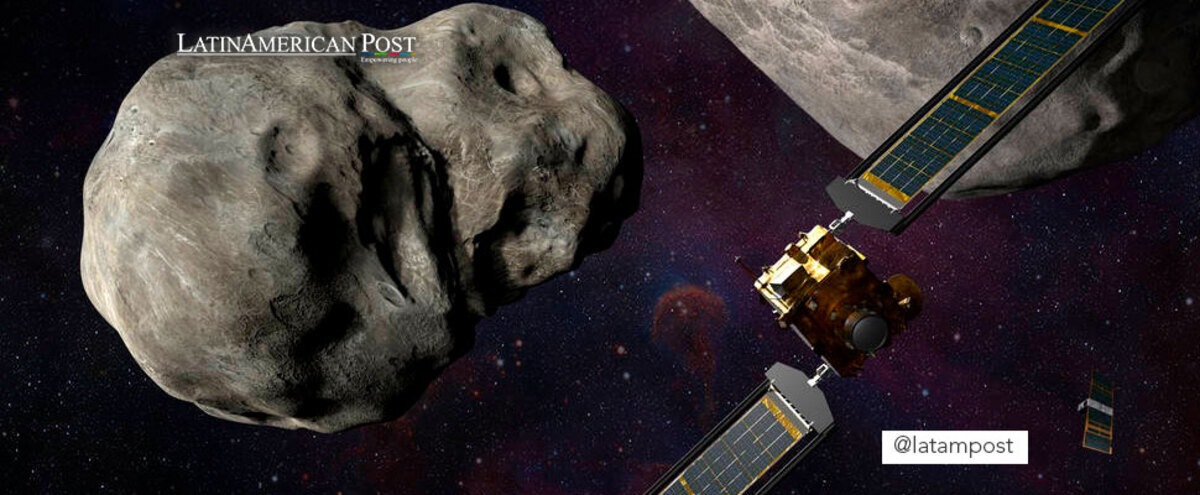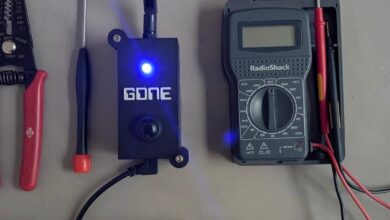Planetary Defense: How Are Asteroids Deflected?
The DART mission successfully hit an asteroid. This is the first planetary defense test conducted by NASA .

Photo: NASA/Johns Hopkins APL/Steve Gribben
LatinAmerican Post | María Fernanda Ramírez Ramos
Listen to this article
Leer en español: Defensa planetaria: ¿Cómo se desvían asteroides?
Although it seems taken from a science fiction movie, NASA hit an asteroid this Monday. After almost a year of flying through space, the double asteroid redirection test, called DART, was executed. This was an action that aims to test viable methods to protect the earth from an eventual asteroid or comet that poses a danger. In turn, the DART mission is part of NASA's planetary defense strategy.
The asteroid that DART hit is called Dimorphos and it specifically targeted one of its moons. This is a small celestial body, about 160 meters in diameter. Dimorphos orbits a larger asteroid called Didymos, which is 780 meters. After years of research, it was decided to test these asteroids that did not represent any danger to the earth, but could serve to test the mechanism.
“At its core, DART represents an unprecedented success for planetary defense, but it is also a unity mission with real benefit to all of humanity,” NASA Administrator Bill Nelson said in a Space Agency news release. . "As NASA studies the cosmos and our home planet, we're also working to protect that home, and this international collaboration turned science fiction into science fact, showing us a way to protect Earth," added Nelson.
We recommend you read: Gallery: 2022, A Year of Mysteries and Discoveries From NASA
How was the asteroid impacted?
NASA sent a ship into space with the intention of colliding and deflecting the asteroid, through kinetic impact. DART traveled into space on a SpaceX Falcon 9 rocket and traveled around 11 million kilometers. In turn, the rocket was loaded with LICIACube, a satellite created by the Italian Space Agency, and the DRACO high-resolution camera. The latter, which revealed the surface of Dimorphos and also obtained several space photographs, including Jupiter and its moons.
The crash was executed at a speed of approximately 22,530 kilometers per hour with a 570-kilogram box-shaped spacecraft. “ Now we know that we can point a spacecraft with the precision necessary to hit even a small body in space. Just a small change in its speed is all we need to make a significant difference in the path an asteroid travels," said Thomas Zurbuchen, associate administrator for the Science Mission Directorate at NASA Headquarters in Washington.
NASA notes that it expects "the impact to shorten Dimorphos's orbit by about 1%, or about 10 minutes." To verify the results, there will be a team of researchers who are monitoring the asteroid with ground-based telescopes.
This is a mission that has involved people around the world. In fact, in approximately four years, the European Space Agency, with its HERA project, will carry out studies on the asteroids Dimorphos and Didymos, to evaluate the coalition caused by DART, the size of its crater and the effects on its mass.
What is planetary defense?
Planetary defense is the branch of applied planetary science that deals with the dangers of a possible impact from Near Earth Objects (NEO). These are asteroids or comets that orbit the sun, but could eventually be carried by their orbit closer to earth and pose a hazard.
Although this danger does not currently exist, NASA created the Planetary Defense Coordination Office in 2016, with the aim of detecting possible dangerous objects in time. To this end, it has the Near Earth Object (NEO) Observations Program, which monitors and aims to identify this type of object.
However, NASA is not the only one working in the area of space defense. There is also the International Asteroid Warning Network. It is a network with which 40 institutions, universities and even amateur astronomers around the world collaborate, such as the China National Space Administration CNSA, the European Space Agency ESA, the Israel Space Agency ISA, the Institute of Space Sciences and KASI Korean Astronomical Observatory, the SONEAR Observatory in Brazil or the University of Nariño in Colombia.
NASA notes that: "While no known asteroids pose a threat to Earth, the DART mission will demonstrate that a spacecraft can autonomously navigate to a kinetic impact on a relatively small target asteroid, and that this is a viable technique to deflect a really dangerous asteroid.




